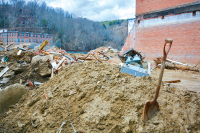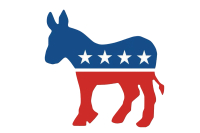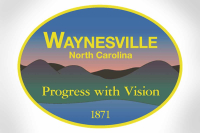From Cherokee to DC, local coffee debuts at Smithsonian
For musicians, it's the Rock and Roll Hall of Fame. For football players, it's the Super Bowl championship rings. For Natalie Smith, having her signature coffee blends featured at The Smithsonian Museum of the American Indian in Washington, D.C., is the greatest accolade.
"I was extremely flattered, and I was elated — all of the good things. Grateful that I can represent my tribe," said Smith, owner of Tribal Grounds in Cherokee and a member of the Eastern Band of the Cherokee Nation.
In December last year, the museum approached Smith out of the blue about their idea to transform a high-end gift shop in the lobby into an espresso and coffee bar. Smith sent samples of her coffee to the museum and soon learned that Tribal Grounds had been chosen to be the sole provider for the new Mitsitam Espresso Coffee Bar in the Museum of the American Indian.
Mitsitam means, "Let's eat" in the native language of the Delaware and Piscataway peoples and is also the name of the museum's restaurant.
Like so many titleholders, Smith's road to glory started years earlier.
When Smith returned to Cherokee from Arizona in the early 2000s, she noticed something missing — a casual meeting place, not just for visitors but for locals as well. There was already an in-and-out coffee joint but nowhere for people to sit and stay for a while.
Related Items
"I saw a need for a community space," Smith said.
In 2004, she opened Tribal Grounds. During the first couple of years, Smith purchased pre-roasted coffee beans that could simply be ground and brewed. An artist by trade, Smith took a bean roasting class and began roasting and concocting her own blends in 2006.
Fast forward about a year later, and the coffee shop had the first of its new specialty javas.
"You have to try different blends. It's like a cookie recipe or any baking recipe," Smith said.
Currently, Tribal Grounds has six or seven signature blends, each created by merging different varieties of coffee beans at different degrees and for different lengths of time. And, the available mixtures are always changing as Smith crafts new recipes.
Each specialized mix has a name of cultural significance. For example, the espresso blend is named Rattlesnake Mountain after the mountain that overlooks all of Cherokee.
Rattlesnake Mountain is said to be a special place where the medicine man Ogv Unitsi killed the poisonous serpent Uktena and received a magical crystal that had been set in the snake's forehead. The gem, which blazed like a star, made Ogv the most powerful medicine man of his time.
The most important part of the coffee-making process for Smith, however, is not how long she roasts the beans or how much of each variety she adds to the mix, but where she gets her coffee beans from. Smith purchases the beans used in her cups of joe from fair-trade companies in South American or Africa that employ mostly indigenous people rather than large-scale, commercial plantations.
"I think it's the best quality, that it has integrity," Smith said.
Plus, it gives greater meaning to her business.
"I am an indigenous person buying coffee from indigenous people selling coffee to indigenous people," Smith said.
Smith does her own research of coffee bean growers but also relies on various organizations to certify the product she purchases as fair trade.
"I am not continuing the cycle of exploitation," Smith said. "It is very important to me."
Smith traveled to the Museum of the American Indian in February to train the staff there on how to brew her coffee and assemble her other specialty beverages.
"I am very impressed by their approach and their enthusiasm," she said.
And once there, the indigenous connection for Smith grew stronger.
Smith said she was elated to meet some of the Ethiopian members of the museum's café staff and tell them that some of her beans are grown in their native land.









